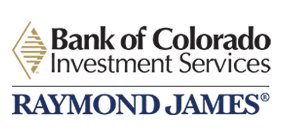Investment Process Videos
We think every investment choice benefits from taking an objective, systematic and disciplined approach to the decision-making process. Raymond James Asset Management Services uses a deliberate, four-step process to build the Freedom investment portfolios, which are available exclusively to the firm’s advisors.
Watch these videos to learn more about the process and its benefits.
Freedom Investment Process Overview
A deeper dive on each of the steps in our portfolio construction process
Step One: Capital Market Assumptions
Step Two: Asset Allocation
Step Three: Investment Selection
Step Four: Ongoing Monitoring
Further information on the funds selected for the Freedom portfolios is available by prospectus, which can be obtained through your financial advisor. Investors should carefully consider the investment objectives, risks, charges and expenses of mutual funds and exchange-traded funds (“ETF”) before investing. All investments are subject to risk. The prospectus contains this and other information about the funds and should be read carefully before investing.
The foregoing content reflects the opinions of Raymond James Asset Management Services and is subject to change at any time without notice. Content provided herein is for informational purposes only and should not be used or construed as investment advice or a recommendation regarding the purchase or sale of any security outside of a managed account. There is no guarantee that the statements or opinions provided herein will prove to be correct.
Asset allocation and diversification does not ensure a profit or protect against a loss. There is no assurance that any investment strategy will be successful. Past performance is not a guarantee of future results. Indices are not available for direct investment. Any investor who attempts to mimic the performance of an index would incur fees and expenses which would reduce returns.
Capital Market Assumptions are forward looking data and subject to change at any time. There is no assurance that projections will be realized. Variations to capital market assumptions are expected and specific sectors or industries are more susceptible due to their increased vulnerability to any single economic, political or regulatory development.
It is important to review the investment objectives, risk tolerance, tax objectives and liquidity needs before choosing an investment style or manager. All investments carry a certain degree of risk and no one particular investment style or manager is suitable for all types of investors.
- Fixed-income securities (or “bonds”) are exposed to various risks including but not limited to credit (risk of default or principal and interest payments), market and liquidity, interest rate, reinvestment, legislative (changes to the tax code), and call risks.
- There is an inverse relationship between interest rate movements and fixed income prices. Generally, when interest rates rise, fixed income prices fall and when interest rates fall, fixed income prices generally rise. Short-term bonds with maturities of three years or less will generally have lower yields than long term bonds which are more susceptible to interest rate risk.
- Callable bonds generally offer a higher yield than non-callable bonds as they have the option to call the bonds and repay the principal prior to maturity. Issuers will generally be inclined to initiate a call if interest rates have declined since the bonds were first issued, as they can reissue new bonds at a lower interest rate. Investors will then be positioned to reinvest return on principal in a declining interest rate environment, thus receiving a lower yield going forward. Credit risk includes the creditworthiness of the issuer or insurer, and possible prepayments of principal and interest. Bonds may receive credit ratings from a number of agencies however, Standard & Poor's ratings range from AAA to D, with any bond with a rating BBB or higher considered to be investment grade. Securities rated below investment grade generally provide a higher yield but carry a higher risk of default which could result on a loss of the principal investment. Because high-yield bonds have greater credit and default risk they may not be appropriate for all investors. While bonds rated investment grade have lower credit and default risk, there is no guarantee securing the principal investment.
- Investors should consider the Yield to Worst (YTW) of a bond or bond portfolio versus the Current Yield as the YTW is the lowest potential yield that that can be received without default. YTW takes into account any bonds that could be called prior to maturity.
- Securities issued by certain U.S. government-related organizations are not backed by the full faith and credit of the U.S. government and therefore no assurance can be given that the U.S. government will provide financial backing should an issue default. Please note these portfolios may be subject to state, local, and/or alternative minimum taxes. You should discuss any tax or legal matters with the appropriate professional
- International investing involves special risks, including currency fluctuations, different financial accounting standards, and possible political and economic volatility.
- Investing in emerging markets can be riskier than investing in well-established foreign markets. Investing involves risk and investors may incur a profit or a loss, including the loss of all principal.
- Investing in small-cap stocks generally involves greater risks, and therefore, may not be appropriate for every investor.
- Commodities trading is generally considered speculative because of the significant potential for investment loss. Commodities are volatile investments and should only form a small part of a diversified portfolio. Among the factors that could affect the value of the fund’s investments in commodities are cyclical economic conditions, sudden political events, and adverse international monetary policies.
- Specific sector investing such as real estate can be subject to different and greater risks than more diversified investments. Declines in the value of real estate, economic conditions, property taxes, tax laws and interest rates all present potential risks to real estate investments.
- Some accounts may invest in Master Limited Partnership (“MLP”) units, which may result in unique tax treatment. MLPs may not be appropriate for ERISA or IRA accounts, and cause K-1 tax treatment. Please consult your tax adviser for additional information regarding the tax implications associated with MLP investments.
- Alternative investments are generally considered speculative in nature and may involve a high degree of risk, particularly if concentrating investments in one or few alternative investments. These risks are potentially greater and substantially different than those associated with traditional equity or fixed income investments. The investment strategies used by certain Funds require a substantial use of leverage.
- Changes in the value of a hedging instrument may not match those of the investment being hedged.
- These portfolios may be subject to international, small-cap and sector-focus exposures as well. Accounts may have over weighted sector and issuer positions, and may result in greater volatility and risk.
- Companies in the technology industry are subject to fierce competition, and their products and services may be subject to rapid obsolescence.
Please refer to Raymond James & Associates’ Wrap Fee Program Brochure for the Freedom fee schedules. Raymond James & Associates, Inc., Raymond James Financial Services, Inc., Raymond James Bank and Eagle Asset Management, Inc. are wholly-owned, independent subsidiaries of Raymond James Financial. The Freedom program was first offered in January 2002, fully allocated to mutual funds. Raymond James reserves the right to replace an existing fund, ETF or manager in a strategy at any time.


